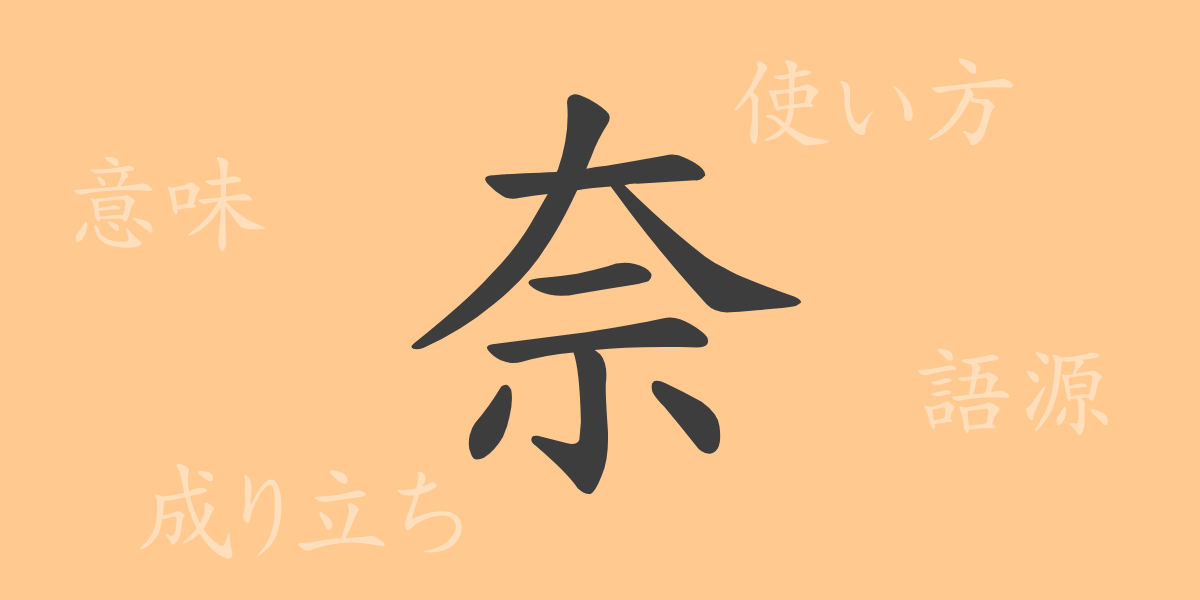Japanese kanji, each with its unique history and meaning, enrich the language and culture. This article focuses on the commonly used kanji ‘奈 (ない)’, often seen in Japanese names and cherished for its delicate sound. We will delve into the origins, meaning, usage, readings, stroke count, and radicals of ‘奈’, as well as explore phrases and idiomatic expressions that feature this character.
Origins of ‘奈 (ない)’
The kanji ‘奈’ originated from ancient China, depicted by the ‘示’ radical representing the binding of plants and the phonetic component ‘那’. Initially symbolizing plants used in rituals, its application has broadened significantly over time.
Meaning and Usage of ‘奈 (ない)’
‘奈’ conveys questions or negations, such as ‘どうして’ (‘why’) or ‘いかん’ (‘how’). It also appears in interrogatives like ‘なに’ (‘what’) and ‘なんじ’ (‘when’). The versatility of ‘奈’ allows its meaning to vary significantly with context.
Readings, Stroke Count, and Radical of ‘奈 (ない)’
Understanding the readings and structure of ‘奈’ is essential.
- Readings: On’yomi ‘ナイ’, Kun’yomi ‘いかん’, ‘なん’
- Stroke Count: ‘奈’ consists of 8 strokes.
- Radical: The radical is ‘大’, shaping characters that resemble the form of ‘大’.
Phrases, Idioms, and Proverbs Using ‘奈 (ない)’
‘奈’ enriches Japanese expressions significantly. For example, the idiom ‘梨花に風’ (りかにかぜ) suggests beauty without substance, akin to expressions like ‘苦労知らず’ (easy living). The proverb ‘桃栗三年柿八年’ implies patience and time required for fruition. Additionally, ‘奈良漬け’ refers to a traditional pickle from Nara Prefecture, reflecting regional culture and taste.
Conclusion on ‘奈 (ない)’
The kanji ‘奈’ with its unique sound and history is used diversely within the Japanese language. Its frequent appearance in names and its soft resonance endear it to many. This article aims to deepen understanding of ‘奈’s’ profound meanings and uses, enhancing appreciation of the richness of the Japanese language. Learning about each kanji’s history and cultural significance is key to a deeper understanding of the world through language.

























